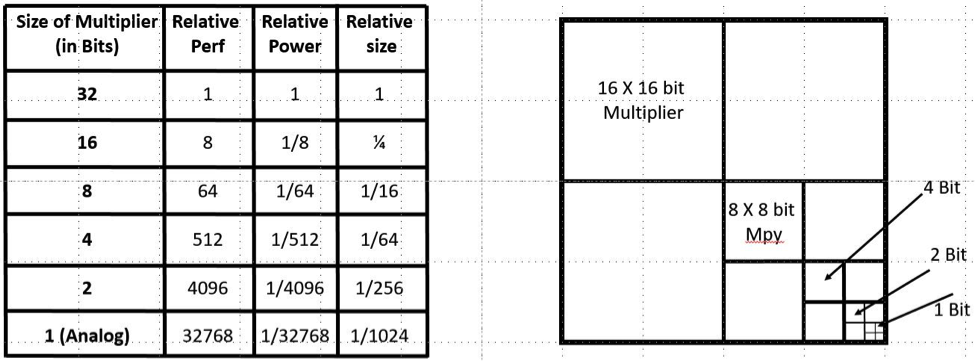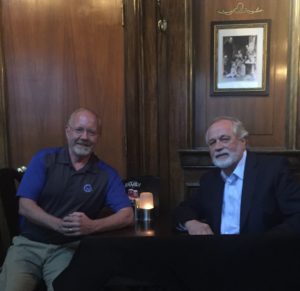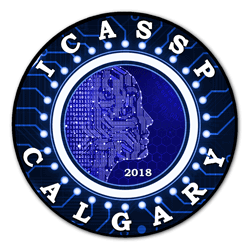
Gene Frantz
Posted on May, 3, 2018
Categories
Recent Posts
- Octavo Systems Unveils the OSD32MP2 Series: Revolutionizing System Design in the Electronics Industry April 9, 2024
- Securing the Future: The Integral Role of SiP Technology in Thwarting Physical Attack Vectors in Embedded Systems March 12, 2024
- Developing Secure Embedded Systems: Best Practices and Strategies March 12, 2024
- Heterogeneous Integration (HI) and System-in-Package (SiP) Technology: A Comprehensive Overview February 20, 2024
- Understanding The Differences Between System-on-Chip (SoC), Package-on-Package (PoP), System-on-Module (SoM), and System-in-Package (SiP) January 17, 2024
Debating the Future of Processing Performance

I have been attending the IEEE’s premier Signal Processing conference, the International Conference on Acoustics, Speech and Signal Processing (ICASSP) for over 30 years. While at Texas Instruments, ICASSP was the perfect venue for me to meet with the signal processing research community, our customers (both present and future), the editors/analysts who were following the Digital Signal Processing explosion, and our competitors. It became my platform to influence the industry while at the same time sensing the direction in which it was moving.
Running out of Performance
So, as I have done many times in the past, I spent the better part of a week at ICASSP reconnecting with leaders and meeting new ones. The highlight of my trip was participating on a panel discussion on the topic of “futures issues facing DSP”. As you might expect, my area of focus among the various experts was on issues dealing with hardware. With my background in semiconductor technology, I interpreted hardware to mean Digital Signal Processor devices. To put it bluntly, we are running out of performance in the world of digital processors not to mention the excessive amount of power dissipation needed to attempt to increase their performance.
At the panel discussion, I presented the idea of going (back) to analog signal processing (i.e., Analog Computing). Wearing both my credentials as a Rice professor as well as an industrialist from Octavo Systems, I introduced the concept of Analog Signal Processing (ASP) and Mixed Signal Processing (MSP). By incorporating elements from both analog and digital signals processing, we will be able to take advantage of the strengths of each field to increase performance while at the same time reducing power consumption.
The Impetus for Analog Computing
The concept I presented was the idea that for every time the size, in bits, of a multiplier in a Digital Signal Processor was cut in half, its performance increased by a factor of 8. At the same time the power dissipation for each multiply is reduced by a factor of 8 and also the area of the multiplier is reduced by a factor of 4. As an example, I compare a 32-bit multiplier to a 16-bit multiplier. Due to the reduction in the number of gates and logic levels, the 16-bit multiplier performs at roughly 8 times the speed, at 1/8th the power dissipation, and 1/4th the size of a 32-bit multiplier. If I follow this argument to its logical conclusion, a single bit multiply could be done about 30 thousand times faster than a 32-bit multiplier with a power dissipation of one 30 thousandth of it (See Figure 1). It can be easily seen that in this exercise we are just trading accuracy, i.e. the number of bits in our calculation, for performance, i.e. the speed, power and area the calculation requires. However, the “aha” moment is realizing that single bit multiplication is common between both digital and analog signal processing.

A standard analog multiply is just a single bit, that has a variable value. But there is a catch, this one-bit analog multiplier has several tough issues to overcome:
- Linearity
- Noise
- Accuracy
- Dynamic range
- Programmability
- Analog memory
You might remember these issues as some of the reasons we abandoned Analog Computers and moved to Digital Computers. These issues, plus several more, will need to be resolved before Analog Signal Processing is re-introduced to the industry.
Is it Worth It?

The question to you: “Is 3 or 4 orders of magnitude higher performance, 3 or 4 orders of magnitude lower power dissipation and two orders of magnitude smaller area than a standard 32-bit multiplier interesting enough for us to resolve these issues?” I personally believe it is interesting enough. We might even find that the 3 or 4 orders of magnitude higher performance may actually be the key to solving some of the issues.
As a great friend of mine in the signal processing community, Alan Oppenheim reminds us “There will always be signals, they will always need processing, and there will always be new applications, new mathematics and new implementation technologies.”
At Octavo, we are doing our part. The ability to integrate uncompromised analog and digital onto the same substrate is critical to the development of what I call a Mixed Signal Processor. That will be the day when we combine the capabilities of analog and digital together in the same processor.

*Thanks to Moderator Yonina Eldar and fellow panelists, Brian Sadler, Bhuvana Ramabhadran, Mariappan Nadar, Fernando Mujica, and Tom Baran.
